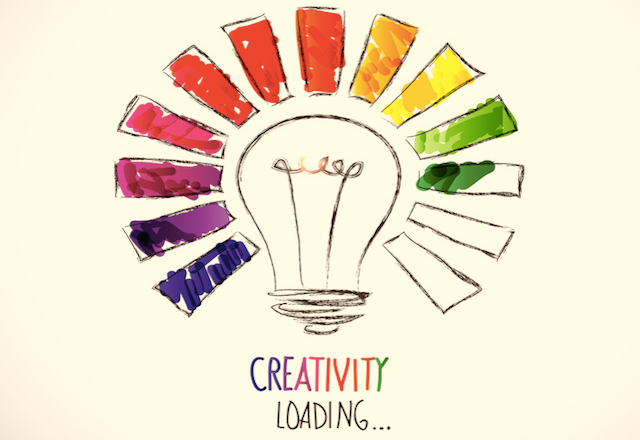A Theory of Creativity
I was reading this fascinating book titled " The Aha! Moment: A Scientist's Take on Creativity" by David Jones and thought to share a theory of creativity proposed by the author. You can buy this book online to read the full book if you find the thought process of the author and his take on creativity interesting.

Here is the author words on this book and his introduction:
"Having ideas! This book is a report from the front. I am a scientist, and I tell many scientific stories; but my notions of creativity include practitioners of the arts— writers, poets, composers, and other celebrated creators. I was also the crazy scientist Daedalus in New Scientist, and then in Nature and in the Guardian newspaper. An ideal Daedalus column started with something everyone knew and finished with something nobody could believe. Where had the argument gone wrong? Daedalus became one of the longest-running jokes in science— I wrote nearly nineteen hundred weekly columns. In parallel with this crazy output, I did proper scientific research. My publications include serious scientific papers, as well as two books expanding and illustrating Daedalian schemes. Some of these actually came true; indeed, you cannot judge in advance whether a new idea will work out, though few of them do. Thus one Daedalian idea won a Nobel Prize for the people who finally made it work, and another was incorporated into President Ronald Reagan’s proposed Star Wars project, which was a factor in ending the Cold War.
Now let's go back to a theory of creativity proposed by David Jones.
"There are two ways of solving a problem. If a rational solution exists, you apply it. This just takes whatever willpower is needed to bash out the right long multiplication or to construct and solve the correct equation or whatever. But suppose there is no rational solution? Then to solve the problem you have to be creative. You need a new idea. Take, for example, the problem of remodeling the kitchen. Many of us have faced this task at least once. The basic problem is to make the best use of your space. I suppose you could tackle it purely rationally. First you would define some complex evaluation function giving the utility of the kitchen as a function of the position of the fridge, stove, dishwasher, cupboards, table, and so on. This would give you some nightmarish equation in many dimensions, which you would differentiate to obtain the maxima of the corresponding hypersurface. The largest maximum, when you had it, would represent the best possible arrangement. It would be a formidable mathematical exercise. But nobody would tackle the problem like that.
The normal human approach would use ideas. “Suppose we put the stove in that corner. This means that the dishwasher has to go over there. The fridge can fit in this space next to cupboard number 1, and cupboard number 2 can go next to the sink. Ah, but then you can’t open cupboard number 1 because the fridge blocks it. Hmm. Well, how about putting the fridge where the dishwasher is now and moving cupboard number 2 next to the stove?” You imagine possible solutions and work out their consequences. Sooner or later, one of these ideas turns out to be satisfactory or so close to satisfactory that a simple rational modification will complete the solution. Most ideas fail in practice, so everyone trying to be creative has to live with lots of failures. It doesn’t matter: you discard the ones that don’t work.
Precisely the same style of thinking applies in science and technology. You cannot, in logic, deduce a theory from the data it must explain or a machine from the need it must fulfill. So a scientist or technologist dreams up possible theories or possible machines and sees whether they fit. Most of the time they don’t. Sometimes you have to devise an experiment, or even a whole program of them, to clarify the problem. I have wasted vast amounts of time asking the wrong question or building an apparatus that merely shuts off one stupid area of inquiry. But even with hindsight I cannot advise any other way to go.
Linus Pauling, who won his first Nobel Prize in 1954 for chemistry, was once asked how he came by his notions. He said that “he had a lot of ideas, and threw the bad ones away.” His reply supports my fear that most ideas are bad. Sir Peter Medawar, who was a Nobel winner in 1960 for medicine and physiology, was more precise: “for all the use it has been to science, about 80% of my time has been wasted.” I reckon 80% wasted is very good. It makes me compare the many experiments I have done with the few that I have actually described and published. I can tighten the statistics even further. At Newcastle University, I once spent about a year of my life building an apparatus to create a chemical “garden” in space. All that time I was trying to predict whether it was feasible and what would happen. I was being a serious scientist indeed. Mercifully it worked, and I found out...
How do you get ideas?
Nobody can have a truly new idea— all we can do is to combine existing facts or notions, gained by observations or the remarks of others. In this book, I shall argue that you need a vast subconscious mass of remembered data. Thus the kitchen remodeling example assumes that the problem solver has worked in a kitchen, has talked with others who have worked in a kitchen, and has accumulated a wide variety of kitchen experiences good and bad."
Book: Jones, David (2012-01-12). The Aha! Moment: A Scientist's Take on Creativity. Johns Hopkins University Press.